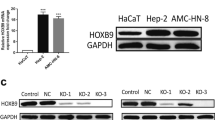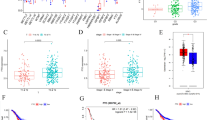Abstract
Chewing habits of tobacco, betel quid (paan), and betel nut (chhaliya) are common traditions in Pakistan. Different other preparations and combination of flavors with tobacco, paan, and chhaliya ingredients are commonly available in the market and have received considerable attention as sources of carcinogens that promote OSCC. Mutagens can damage DNA and generate promutagenic lesions. The germ line mutation/polymorphism of p53 gene has been reported to be involved in multiple steps of carcinogenesis. This study aims to find out the loss of TP53 functions due to mutation/polymorphism caused by genomic alteration and interaction with tobacco-related ingredients.
Tissue and blood specimens from 260 OSCC patients were collected and compared with blood samples of 260 age- and sex-matched controls. Mutations in exons 2–11 of p53 gene were examined by PCR-SSCP and directly sequenced.
A novel mutation was found in exon 7 of p53 gene. This mutation was observed in the tumors of the OSCC patients. The blood samples of the patients and the controls did not show the nucleotide change in this region. The “AGT” to “ACT” missense mutation was identified at position 719 at TP53. This results in the substitution of amino acid serine with threonine at codon 240 of p53 protein.
This novel missence mutation in the DNA-binding domain indicated that the DNA structure may be damaged by the use of exogenous DNA-damaging agents, including tobacco-related carcinogens present in gutka, niswar, and manpuri, which may result in the loss of p53 protein function.




Similar content being viewed by others
References
Nair UJ, Floyd RA, Nair J, Bussachini V, Friesen M, Bartsch H. Formation of reactive oxygen species and of 8-hydroxydeoxyguanosine in DNA in vitro with betel quid ingredients. Chem Biol Interact. 1987;63:157–69.
Nair U, Bartsch H, Nair J. Alert for an epidemic of oral cancer due to use of the betel quid substitutes gutkha and pan masala: A review of agents and causative mechanisms. Mutagenesis. 2004;19:251–62.
Brachmann RK. P53 mutants: the achilles’ heel of human cancers? Cell Cycle. 2004;3:1030–4.
Mukherjee J, Ghosh A, Ghosh A, Chaudhuri S. ENU administration causes genomic instability along with single nucleotide polymorphisms in p53 during gliomagenesis: T11TS administration demonstrated in vivo apoptosis of these genetically altered tumor cells. Cancer Biol Ther. 2006;5:156–64.
Chartier FL, Bossu JP, Vu-Dac N, Fruchart JC, Laine B. Involvement of intronic sequences in the transcriptional regulation of apolipoprotein b, e and a-ii genes. Z Gastroenterol. 1996;34:44–5.
Huang XH, Sun LH, Lu DD, Sun Y, Ma LJ, Zhang XR, et al. Codon 249 mutation in exon 7 of p53 gene in plasma DNA: Maybe a new early diagnostic marker of hepatocellular carcinoma in Qidong risk area. China World J Gastroenterol. 2003;9:692–5.
Ralhan R, Agarwal S, Nath N, Mathur M, Wasylyk B, Srivastava A. Correlation between p53 gene mutations and circulating antibodies in betel- and tobacco-consuming North Indian population. Oral Oncol. 2001;37:243–50.
Schneider-Stock R, Mawrin C, Motsch C, Boltze C, Peters B, Hartig R, et al. Retention of the arginine allele in codon 72 of the p53 gene correlates with poor apoptosis in head and neck cancer. Am J Pathol. 2004;164:1233–41.
Hollstein M, Sidransky D, Vogelstein B, Harris CC. P53 mutations in human cancers. Science. 1991;253:49–53.
Cordon-Cardo C. Mutations of cell cycle regulators: biological and clinical implications for human neoplasia. Am J Pathol. 1995;147:545–60.
Velculescu VE, El-Deiry WS. Biological and clinical importance of the p53 tumor suppressor gene. Clin Chem. 1996;42:858–68.
Greenblatt MS, Bennett WP, Hollstein M, Harris CC. Mutations in the p53 tumor suppressor gene: clues to cancer etiology and molecular pathogenesis. Cancer Res. 1994;54:4855–78.
Whibley C, Pharoah PD, Hollstein M. P53 polymorphisms: cancer implications. Nat Rev Cancer. 2009;9:95–107.
Sambrook J, Fritsch EF, Maniatis T. Molecular cloning: a laboratory manual. Cold Spring Harbor Laboratory: 2nd ed. New York: 1987.
Sambrook J and Russel DW. Molecular cloning: a laboratory manual. Cold Spring Harbor Laboratory: 3rd ed. New York: 2001.
Saleem S, Azhar A, Hameed A, Khan MA, Abbasi ZA, Qureshi NR, et al. P53 (Pro72Arg) polymorphism associated with the risk of oral squamous cell carcinoma in gutka, niswar and manpuri addicted patients of Pakistan. Oral Oncol. 2013;49:818–23.
Khaliq S, Hameed A, Khaliq T, Ayub Q, Qamar R, Mohyuddin A, et al. P53 mutations, polymorphisms, and haplotypes in Pakistani ethnic groups and breast cancer patients. Genet Test. 2000;4:23–9.
Zhao W, Si J, Li K, Zhang X, Song G. Detection of p53 mutation using PCR-SSCP silver staining method. Zhongguo Yi Xue Ke Xue Yuan Xue Bao. 1995;17:219–22.
Thompson JD, Gibson TJ, Plewniak F, Jeanmougin F, Higgins DG. The CLUSTAL X windows interface: flexible strategies for multiple sequence alignment aided by quality analysis tools. Nucleic Acid Res. 1997;25:4876–82.
MedCalc. Easy to use statistical software. http://www.medcalc.org/calc/odds_ratio.php. Accessed 01 May, 2014
3D-JIGSAW. Comparative modeling. http://bmm.cancerresearchuk.org/~3djigsaw/. Accessed 01 May, 2014
Huang TT, Gonzales CB, Gu F, Hsu YT, Jadhav RR, Wang CM, et al. Epigenetic deregulation of the anaplastic lymphoma kinase gene modulates mesenchymal characteristics of oral squamous cell carcinomas. Carcinogenesis. 2013;34:1717–27.
Hecht SS. Tobacco carcinogens, their biomarkers and tobacco-induced cancer. Nat Rev Cancer. 2003;3:733–44.
Nair UJ, Nair J, Mathew B, Bartsch H. Glutathione S-transferase M1 and T1 null genotypes as risk factors for oral leukoplakia in ethnic Indian betel quid/tobacco chewers. Carcinogenesis. 1999;20:743–8.
Horsfall MJ, Gordon AJ, Burns PA, Zielenska M, van der Vliet GM, Glickman BW. Mutational specificity of alkylating agents and the influence of DNA repair. Environ Mol Mutagen. 1990;15:107–22.
Pillay M, Vasudevan DM, Rao CP, Vidya M. P53 expression in oral cancer: observations of a South Indian study. J Exp Clin Cancer Res. 2003;22:447–51.
Wogan GN, Hecht SS, Felton JS, Conney AH, Loeb LA. Environmental and chemical carcinogenesis. Semin Cancer Biol. 2004;14:473–86.
Braakhuis BJ, Brakenhoff RH, Leemans CR. A genetic progression model of oral cancer: current evidence and clinical implications. J Oral Pathol Med. 2004;33:317–22.
Acknowledgments
The study was funded by the Higher Education Commission (HEC), Islamabad, Pakistan. Research Project No. 20-695.
Conflict of interest
The authors declare no conflict of interest.
Author information
Authors and Affiliations
Corresponding author
Rights and permissions
About this article
Cite this article
Saleem, S., Abbasi, Z.A., Hameed, A. et al. Novel p53 codon 240 Ser > Thr coding region mutation in the patients of oral squamous cell carcinoma (OSCC). Tumor Biol. 35, 7945–7950 (2014). https://doi.org/10.1007/s13277-014-2062-2
Received:
Accepted:
Published:
Issue Date:
DOI: https://doi.org/10.1007/s13277-014-2062-2




